#DPDT
Explore tagged Tumblr posts
Text
DPDT push pull pots explained.
DPDT push pull pots explained Ah, the DPDT push-pull potentiometer switch—a true multitasker for guitar wiring enthusiasts! Let’s break it down into manageable chunks, keeping things simple but thorough. What Is a DPDT Push-Pull Potentiometer? “DPDT” stands for Double Pole, Double Throw. This little wonder has two independent switches inside, each capable of toggling between two positions. Pair…
0 notes
Text
Unleashing the Future of Robotics at Techfest 2024 (IIT Mumbai)- A Workshop Like No Other
The world of robotics is about to reach new heights, and you have the chance to be part of this incredible journey! Techfest 2024, IIT Bombay’s (techfest.org) annual celebration of technology and innovation, is set to host a groundbreaking robotics workshop in collaboration with Pinwheel Robotics. This isn’t just another workshop—it’s a gateway to the most thrilling competitions of the year:…

View On WordPress
#2024#Arduino#Arduino IDE#Bluetooth#cozmoclench#DC MOTOR#differentialdrive#dpdt#iit#iitmumbai#line-follower#LSRB#maze-solving#meshmerize#MotorDriver#orientation#pairindia#pinwheel robotics#Projects#Robotics#STEM#STEM Activity Set#techfest#workshop
0 notes
Text
https://www.futureelectronics.com/p/electromechanical--relays--solid-state-relays/cpc1976y-littelfuse-2201069
Solid State Relay Through Hole, what is a Solid State Relay, switching
CPC1976Y CPC1972 Series 2 A 600 V Solid State Relay Through Hole - SIP4
#Relays#Solid State Relays (SSRs)#CPC1976Y#Littelfuse#electromechanical relay#DPDT#PCB#PEWA#aromat#SPDT#Solid State Relay Through Hole#switching#Clare#Photovoltaic
1 note
·
View note
Text
https://www.futureelectronics.com/p/electromechanical--relays--power-relays/1415898-1-te-connectivity-4164750
Non latching, Socket power relay, DPST relays, DPDT relays, Power Relay Module
RT1 Series SPST (1 Form A) 16 A 12 V PCB Mount General Purpose Power Relay
#Relays#Power Relays#1415898-1#TE Connectivity#operating current automotive relay#PCB Mount General Purpose#240VAC#Socket#DPST relays#DPDT relays#Module#Power relay socket#Relay module#electromagnetic coil#latching power relays
1 note
·
View note
Text

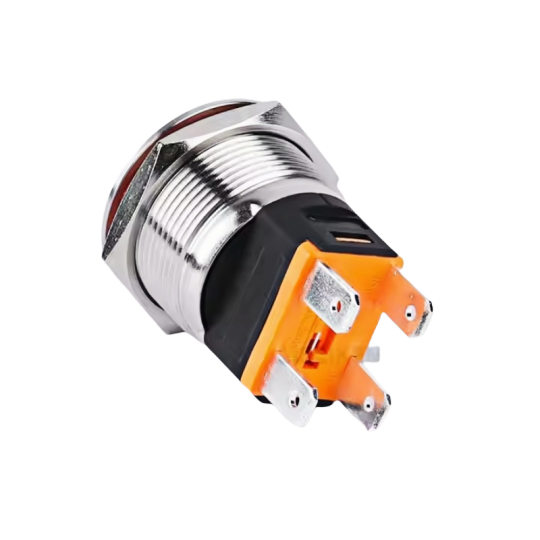
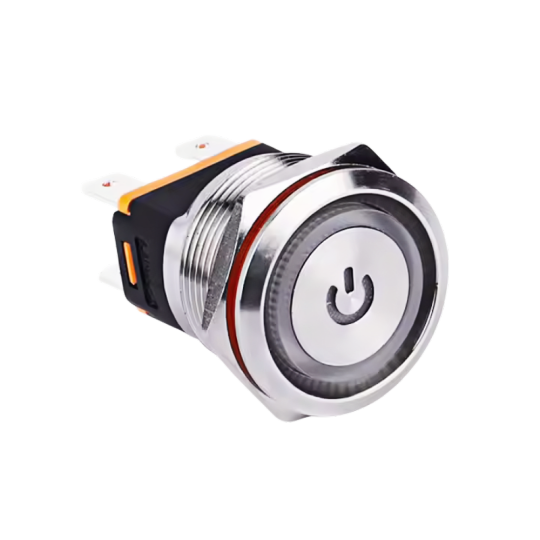
This 22mm metal push button switch features a DPDT self-locking function, built-in 12V blue LED illumination, and a power logo indicator for clear visibility. Rated at 15A with an IP67 waterproof rating, it’s ideal for harsh environments. Durable metal construction ensures long-lasting performance in industrial, automotive, and outdoor applications where reliable and visible control is required.
2 notes
·
View notes
Text
How to Choose the Right Door Limit Switch for Your Project

In the world of automation, safety, and mechanical design, door limit switches play a vital role in monitoring and controlling the position of doors, gates, and access panels. Whether you’re designing an industrial machine, an elevator system, or a home automation project, selecting the right limit switch ensures both safety and functionality.
As a trusted supplier of door limit switches and a full range of low voltage switchgear products, we aim to provide you with comprehensive guidance to help you select the ideal components for your specific needs.
This article provides a detailed guide on how to choose the best door limit switch for your project, highlighting the key factors, types, and applications you should consider.
What is a Door Limit Switch?
A door limit switch is an electromechanical device that detects the physical movement or position of a door. When the door reaches a certain position — fully open, fully closed, or somewhere in between — the switch activates or deactivates an electrical circuit.
These switches are commonly used in:
· Elevator doors
· Garage doors
· Industrial machines
· HVAC systems
· Automated gates
· Access control systems
Why Choosing the Right Limit Switch Matters
Choosing the correct limit switch is essential for:
· Safety: Preventing overtravel or mechanical failure.
· Accuracy: Ensuring the door is properly positioned before triggering other processes.
· Durability: Withstanding environmental stressors like dust, moisture, or extreme temperatures.
· Efficiency: Reducing maintenance and downtime in automated systems.
Key Factors to Consider When Selecting a Door Limit Switch
1. Type of Door Movement
The direction and nature of the door’s movement determine the kind of switch you need:
· Sliding doors: Require a linear actuator-type or proximity switch.
· Swinging doors: Benefit from lever or roller-type limit switches.
· Lift doors or panels: Often use plunger-type or magnetic limit switches.
2. Switch Type
There are several types of door limit switches. Choose based on precision, contact type, and actuation style.
Mechanical Limit Switches
· Actuated physically by the door.
· Types: Roller lever, plunger, or spring rod.
· Pros: Simple, cost-effective.
· Cons: Susceptible to wear and physical damage.
Proximity Switches
· Detect without direct contact (inductive, capacitive, or magnetic).
· Pros: Longer lifespan, sealed from contaminants.
· Cons: More expensive; may require specific mounting and alignment.
Magnetic Reed Switches
· Activated by a magnet attached to the door.
· Common in security systems.
· Pros: Compact, easy to install, no mechanical wear.
· Cons: Sensitive to magnetic interference.
3. Electrical Ratings
Match the switch with your system’s voltage and current requirements. Check for:
· Operating voltage (AC/DC)
· Load capacity (e.g., 5A @ 250V AC)
· Contact configuration (SPDT, DPDT, etc.)
4. Environmental Conditions
Evaluate the environment where the switch will operate:
· IP Rating: Ensure protection against dust and water (e.g., IP67 for outdoor use).
· Temperature Range: Some switches are rated for extreme temperatures.
· Chemical Resistance: For industrial or corrosive environments.
5. Mounting and Size Constraints
Ensure the switch can be securely mounted within the available space. Consider:
· Actuator travel distance
· Orientation (horizontal, vertical, angled)
· Cable or connector type
6. Durability and Life Cycle
Look for specifications like:
· Mechanical life (number of operations)
· Electrical life (switching durability under load)

Bonus Tips for Successful Implementation
· Test before finalizing: Always prototype with a few switches before bulk purchasing.
· Use protective enclosures: Especially in harsh environments.
· Add debounce circuitry: For systems sensitive to switch bounce.
· Ensure accessibility: Make the switch easy to access for maintenance or adjustments.
Your Trusted Partner in Low Voltage Switchgear
As a leading supplier of low voltage switchgear, we offer not only high-quality door limit switches, but also a wide variety of industrial components including:
· Power Transformers
· Panel Fan and Filter
· Current Transformers
· Analog and Digital Meters
· Relays and Timers
Conclusion
Choosing the right door limit switch is not just about picking a device that fits — it’s about ensuring long-term performance, safety, and compatibility with your overall system. By understanding the different types of switches, environmental requirements, and application-specific factors, you can confidently select the ideal switch for your project.
Whether you’re working on a DIY smart home upgrade or designing a robust industrial system, the right switch can make all the difference in functionality and reliability.
4 notes
·
View notes
Text
12-year-old me would have had an autism 27 minutes.
"Oooh, that DPDT switch is illuminated!"
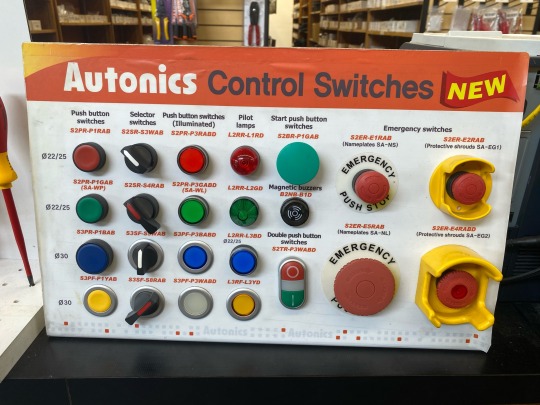
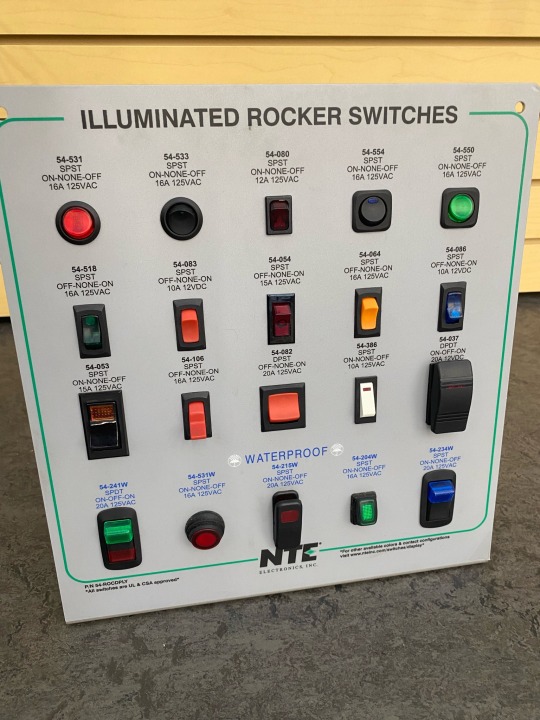
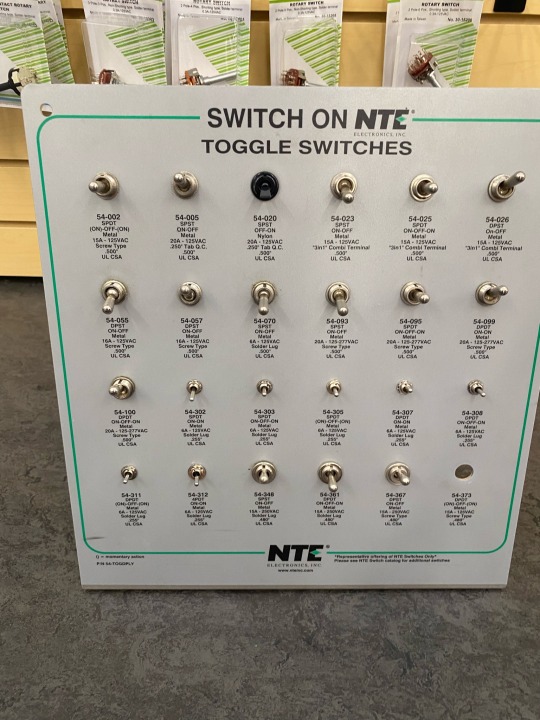
had an autism moment at the computer part store today
55K notes
·
View notes
Text
Satellite Investment with Orbital Decay and Cost Return Over Time
A company invests $100 million to deploy a communications satellite into low Earth orbit. The satellite provides revenue over time, but its orbit slowly decays due to atmospheric drag — a physical phenomenon. As the satellite descends, signal quality drops, affecting revenue (a financial concept).
We want to model how the satellite’s altitude affects profit over time, and use calculus to find when it’s best to retire or replace the satellite.
🧮 Step 1: Define the Physics
Orbital decay (simplified):
Let:
h(t): altitude of satellite at time t,
Assume:h(t)=h0⋅e−αtwhere:
h0 is initial altitude (e.g., 500 km),
α is decay rate (due to drag).
Then the rate of altitude loss is:dhdt=−αh0e−αt=−αh(t)
💰 Step 2: Define the Finance
Revenue depends on signal strength, which depends on altitude:
Assume:R(t)=R0⋅(h(t)h0)2=R0⋅e−2αt
Cost is linear (e.g., operations, maintenance):
C(t)=C0+ct
Profit function:
P(t)=R(t)−C(t)=R0⋅e−2αt−(C0+ct)
🔁 Step 3: Use Calculus to Optimize
Find when profit stops increasing (peak profit):dPdt=−2αR0e−2αt−c
Set dPdt=0 and solve:−2αR0e−2αt=c⇒t=−12αln(c2αR0)
🔍 Interpretation
This equation tells you when to shut down or replace the satellite: the moment revenue loss (from lower altitude) is outweighed by ongoing costs.
The intersection of orbital decay (physics) and profit optimization (finance) makes this a true hybrid of the two fields.
0 notes
Text
Using Arteche Relays to Enhance Contact Protection and Galvanic Isolation in Complex Systems

In the ever-evolving world of electrical engineering and power systems, the reliability and performance of auxiliary relays play a crucial role in maintaining the safety, stability, and efficiency of operations. One such trusted name in this domain is Arteche—a company recognized globally for its innovation and dedication to delivering highly reliable electromechanical relays for critical applications.
Among its wide portfolio, the Arteche Instantaneous Relay RD-2DI stands out for its impeccable performance in protecting contacts and ensuring galvanic isolation in complex and high-demand environments. As electrical systems become more intricate and the demand for high-speed, high-integrity signal switching grows, integrating advanced auxiliary relays like the RD-2DI is not just a preference but a necessity. Arteche relays serve as the foundation for a safer, smarter, and more robust power management ecosystem, from nuclear power plants to smart grid substations.
This blog explores how the Arteche RD-2DI and related auxiliary relay solutions can improve contact protection, enhance galvanic isolation, and deliver long-lasting, fault-resistant performance across various industrial sectors.
Understanding Arteche RD-2DI Instantaneous Relays
The Arteche RD-2DI is an instantaneous auxiliary relay, often referred to as a monostable relay. It features two changeover contacts (DPDT Form-C) and is built according to stringent international standards including IEC 61000, IEC 60947, IEC 60255, and ANSI C37.90. These standards guarantee high reliability and safety performance, making the RD-2DI an ideal fit for critical applications in power utilities and industrial systems.
Instantaneous relays such as the RD-2DI operate with immediate contact switching when the coil is energized, and the contacts return to their initial state as soon as the coil is de-energized. This characteristic makes them especially suitable for fast response and real-time signal control.
What Is Contact Protection and Why Does It Matter?
Contact protection refers to safeguarding the relay's internal contacts and the external components they connect to from electrical arcs, overloads, and mechanical wear. Every time a relay switches, it creates a small arc that can deteriorate contact surfaces over time, reducing the relay's operational life and risking failure.
The Arteche RD-2DI mitigates these risks through its precise design and coil protection features. Models under the DI and V series include protective components that absorb transient voltages and reduce arc formation, ensuring minimal wear and extended relay life. This makes Arteche relays suitable for high-duty cycles and applications where long-term durability is essential.
Galvanic Isolation: A Key to System Integrity
Galvanic isolation is the method of preventing current flow between different sections of a system while still allowing data or signal transfer. It is critical in protecting sensitive components and ensuring user safety, especially in environments dealing with high voltages or different ground potentials.
Arteche relays are specifically engineered to provide high dielectric strength and effective galvanic isolation. Their robust contact design and quality insulation materials create physical and electrical separation between control and load circuits. This not only prevents unwanted electrical interference but also protects against voltage spikes, ground loops, and potential faults across circuits.
The RD-2DI provides excellent galvanic isolation, making it an excellent choice for interfacing between low-power control logic and high-voltage power equipment. Its reliable contact behavior ensures that control signals are transmitted cleanly without compromising the integrity of the overall system.
Applications in Complex and Safety-Critical Systems

Arteche auxiliary relays, including the RD-2DI, are trusted in industries where failure is not an option. Applications include:
Nuclear Power Plants: Where SIL-4 safety levels are mandatory, Arteche relays contribute to secure logic processing and fault isolation.
Electrical Substations: For protection schemes, interface signaling, and remote commanding where signal integrity and speed are critical.
Industrial Automation: Where electromagnetic compatibility and resistance to vibrations are needed for reliable performance.
Railways and Seismic Zones: Models with seismic characteristics (SY series) withstand shocks and mechanical stress without compromising performance.
The flexibility in mounting (flush or surface with D-type sockets) and the wide operating voltage range makes them adaptable to a variety of installation environments.
Advantages of Arteche Relays in Contact Protection and Isolation
Coil Protection: Arteche DI and V series relays include coil suppression components to handle transient voltages and back EMF, reducing electrical stress on the coil and extending relay lifespan.
High-Speed Response: Relays like the R, XR, and UR series offer fast and ultra-fast switching, ensuring timely isolation of faults and minimizing the impact of transient events.
Mechanical Reliability: Engineered for environments with frequent vibration, the relay’s mechanical integrity and stability under seismic conditions ensure long-term service.
Electrical Durability: Designed to handle high inductive loads, Arteche contactor relays offer superior arc suppression and long electrical life, key factors in contact protection.
Safety and Compliance: With compliance to IEC and ANSI standards and a proven track record in over 150 countries, Arteche relays provide peace of mind in mission-critical environments.
Arteche: A Legacy of Trust and Innovation
With more than six decades of industry expertise, Arteche has established itself as a global leader in the design and manufacture of high-performance electromechanical relays. Renowned for their unwavering commitment to quality, safety, and technological advancement, Arteche products are more than just electrical components—they are trusted safeguards that play a critical role in protecting vital infrastructure and energy systems across more than 150 countries.
Their auxiliary relays are engineered to deliver consistent, dependable performance in even the most demanding and hazardous environments. Whether you are developing a new power grid protection scheme from the ground up, modernizing a legacy control panel to meet today’s safety standards, or constructing sophisticated automated logic systems for use in high-risk sectors such as nuclear power, transportation, or heavy industry, incorporating Arteche relays into your design guarantees a higher level of operational integrity.
By choosing Arteche, professionals benefit from a legacy built on trust, proven reliability, and continuous innovation. Their relays are not only designed for long-term durability and resilience, but also for seamless integration, offering a versatile and future-ready solution to complex electrical protection challenges.
Conclusion: Building Smarter, Safer Systems with Arteche RD-2DI
Contact protection and galvanic isolation are essential design principles in today’s high-stakes electrical systems. Arteche’s RD-2DI instantaneous relay brings together rugged design, responsive performance, and adherence to global safety standards to offer a relay solution that performs where it matters most.
From its high-speed switching and reliable contact design to its compliance with seismic requirements and support for complex logic schemes, the RD-2DI is more than just a relay—it is a cornerstone of dependable system architecture.
For engineers, OEMs, and power system integrators seeking to enhance system integrity and safety, Arteche relays offer a smart, reliable, and field-proven choice.
Click here to explore Arteche’s full range of auxiliary relays and experience unmatched reliability in your next electrical project.
#ArtecheRelays#AuxiliaryRelays#RD2DI#ElectricalProtection#PowerSystemSafety#GalvanicIsolation#ContactProtection#IndustrialAutomation#SubstationEquipment#RelaySolutions#CriticalInfrastructure#HighVoltageProtection#ElectricalEngineering#SeismicCertifiedRelays#SmartGridTechnology
0 notes
Text

Panasonic DS2Y-S-DC5V Signal Relay – 5V DPDT 2A Compact Through Hole Relay
The Panasonic DS2Y-S-DC5V is a high-performance signal relay with a 5VDC coil and DPDT (2 Form C) contact configuration. With a 2A load capacity, it ensures fast and reliable switching for low-power circuits. Its compact through-hole design makes it ideal for densely packed PCBs in automation, instrumentation, and control systems. Though discontinued it remains in demand for replacement and legacy support.
Key Features:
Coil Voltage: 5VDC Contact Type: DPDT (2 Form C) Switching Power: 500VA / 440W Contact Rating: 2A @ 250VAC / 220VDC Fast Response: 4 ms operate / 3 ms release Mounting: Through Hole with PC Pins Temperature Range: -40°C to +70°C
📦 Bulk orders available – DM us or call to get the best price!
📞 Contact Today : +919810987429
📥 Enquire Now : [email protected]
#DS2YRelay#PanasonicRelay#5VRelay#SignalRelay#DPDTRelay#ThroughHoleRelay#ObsoleteRelay#LegacyComponent#CompactRelay#AutomationRelay#ElectricalRelay#PCBRelay#LowPowerRelay#ReplacementRelay#IndustrialRelay
0 notes
Text
How to Choose the Right Rocker Switch for Your Project
Whether working on an electronic DIY project or upgrading a piece of equipment, selecting the right rocker switch is crucial for functionality and safety. With many types available, it’s important to understand your needs before choosing.

What Is a Rocker Switch?
A rocker switch is an electrical switch that rocks back and forth when pressed, instead of tripping or toggling. It's commonly used to turn devices on and off and is popular in both residential and industrial applications due to its simplicity and durability.
Types of Rocker Switches
There are different types of rocker switches based on design and function:
1. Single Pole Single Throw (SPST)
Controls one circuit.
Simple on/off functionality.
Ideal for basic appliances and lights.
2. Single Pole Double Throw (SPDT)
Switches between two outputs.
Useful for switching between power sources or functions.
3. Double Pole Double Throw (DPDT)
Controls two separate circuits.
Suitable for more complex systems requiring reversible current flow.
Key Factors to Consider When Choosing a Rocker Switch
1. Electrical Rating
Check the voltage and current rating. Using a rocker switch with the wrong rating may result in overheating or failure. Always ensure the switch can handle your device’s electrical load.
2. Mounting Style
Determine how the switch will be installed:
Panel Mount: Fits into a panel cut-out.
PCB Mount: Designed to solder directly onto circuit boards.
3. Switch Function
Do you need the switch to stay in place or return to its original position?
Maintained Rocker Switch: Stays in the on/off position until changed manually.
Momentary Rocker Switch: Returns to its original position when released (commonly used in doorbells or reset functions).
4. Actuator Style and Size
Rocker switches come in various shapes and sizes. Consider:
Ergonomics (ease of use)
Visibility (illuminated options for dark environments)
Aesthetic (matching the device design)
5. Environmental Conditions
Will the rocker switch be exposed to dust, water, or extreme temperatures? Look for:
IP ratings for water/dust resistance.
UV-resistant materials for outdoor use.
Sealed switches for industrial environments.
6. Illumination Options
Some rocker switches have built-in LED or neon lights to indicate status. Illuminated rocker switches are ideal for dashboards, control panels, or low-light conditions.
Common Applications of Rocker Switches
Household appliances (e.g., coffee makers, fans)
Automotive dashboards
Industrial machines
Marine and RV electrical panels
Power strips and surge protectors
Choosing the right rocker switch depends on understanding your project's requirements—electrical load, environment, and functionality. Always refer to technical specifications and, if in doubt, consult a professional to ensure safety and performance.
#rocker switch#off road vehicle parts#off road parts and accessories#off road accessories las vegas#motorsports
0 notes
Text
0 notes
Link
0 notes
Text
Relay trung gian MY2E Series Omron
Relay trung gian MY2E Series Omron độ tin cậy cao, điện áp coil 110/120VAC, hoạt động bền bỉ, tiếp điểm DPDT, 3PDT. Xem ngay: https://hoplongtech.com/series/my2e
0 notes
Text
Relay trung gian MY2K Series Omron dòng tiếp điểm 10A, điện áp chuyển mạch 250VAC/125VDC, điện áp 24VDC, nhiệt độ hoạt động -55 đến 60 ℃, thiết kế nhỏ gọn, dễ dàng lắp đặt. Xem ngay: https://hoplongtech.com/series/my2k
0 notes
Text
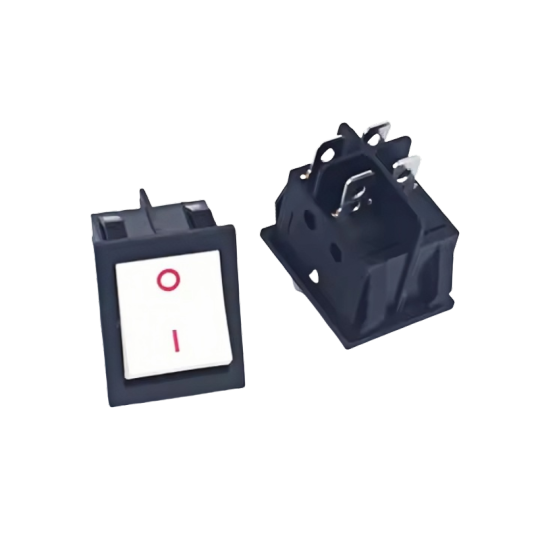
Rocker switches come in a variety of configurations to suit different applications. Some are designed for low-voltage systems like car lighting and audio equipment, while others are rated for high-current uses such as power tools and industrial machines. They can be found in SPST (single pole single throw), SPDT (single pole double throw), and DPDT (double pole double throw) arrangements, allowing for flexible wiring options depending on the complexity of the system they're controlling.
2 notes
·
View notes